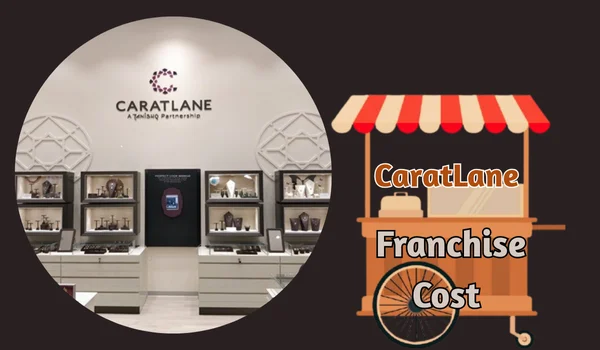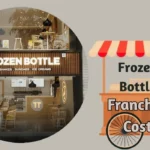Thinking about taking a jewellery franchise in India with a strong digital + retail brand? CaratLane—now a Titan Company (Tata Group) brand—has grown fast across metros and Tier-II/III cities with its lightweight, everyday-wear focus and omni-channel experience. Below is a practical, India-specific guide covering expected franchise cost, space needs, ROI, and how to apply—along with caveats where official numbers aren’t public.
Quick context (2025): CaratLane continues to expand aggressively in smaller cities and overseas, with over 300 stores and plans for 40+ more outlets focused on Tier-II/III markets.
Does CaratLane offer franchising?
Historically, CaratLane has operated with a mix of company-owned and some franchisee stores (industry coverage in earlier years referenced a combination model). Today, Titan’s official website lists franchising opportunities across its brands (you apply via Titan), but CaratLane’s own site does not publicly publish a detailed franchise brochure. Treat all specific rupee figures below as indicative ranges gathered from franchise portals and trade coverage; always verify with Titan/CaratLane before committing.
CaratLane Franchise Cost: Indicative Investment Breakdown

Multiple franchise-advisory portals in India share typical numbers for a CaratLane outlet. While unofficial, they provide a realistic ballpark to plan initial finances:
- Franchise fee: ~₹4 lakh (one-time)
- Store build-out / interiors: ~₹20–30 lakh (varies by city, frontage, and mall vs. high street)
- Total initial outlay (incl. fees + setup + initial inventory): ~₹25–50 lakh (range depends heavily on stock depth and location)
- Revenue share / royalty: Commonly listed as ~96% to franchisee / 4% to brand (or described as a 4% royalty).
- Breakeven / ROI timeline (as per portals): ~12 months in favourable locations with right assortment and marketing.
Reality check: These figures come from third-party franchise sites and may differ from the current official terms. Always seek a fresh FDD / LOI directly from Titan/CaratLane.
Space, Location & Store Format
- Carpet area: Jewellery boutiques in this segment typically need 400–800 sq ft for a premium yet compact footprint (exact spec is shared at the DFR/BOQ stage by the brand).
- Catchment: High-street jewellery clusters, mall jewellery zones, or dense residential catchments with aspirational, working professionals.
- Tier-II/III focus: CaratLane is explicitly expanding into smaller Indian cities, which can improve real-estate economics and staffing costs while tapping rising demand for lightweight gold and daily-wear diamond jewellery.
Why CaratLane? Brand & Demand Drivers
- Omni-channel engine: CaratLane is built on a strong online funnel + try-at-home + store pickup/appointment model, which helps franchisees with steady walk-ins and assisted conversions.
- Product positioning: The brand has leaned into lightweight / lower-carat formats for everyday wear—an area seeing growing acceptance amid high gold prices—broadening the target market beyond investment-led 22K purchases.
- Titan backing: As part of Titan, you benefit from institutional supply chains, design pipelines, trust, and national marketing.
Expected Operating Economics (Illustrative)
Important: Use this as a thought starter only; your actual P&L depends on rent, staff, city, assortment depth, and local competition.
- Gross margin: Jewellery retail margins vary by category (gold vs. diamond vs. studded fashion). A simplified blended gross margin (after making charges) must comfortably cover rent (often 6–12% of sales), staff, utilities, local marketing, shrinkage & royalty.
- Inventory turns: Efficient turns on lightweight, fast-moving SKUs (earrings, rings, pendants) are critical to reach the 10–12 month breakeven scenario touted by portals.
- Marketing: Leverage brand campaigns + local digital (Search, Maps, Instagram) and tie into “Try at Home” and appointment drives that CaratLane is known for.
Training, Tech & Brand Support
Franchise portals describe a structured onboarding (site approval, layout/interiors as per brand handbook, POS & CRM training, VM and assortment guidance), with the brand driving new launches and national promotions. Confirm the scope of staff training, VM calendars, replenishment norms, and buy-back/repair policies in your agreement.
Step-by-Step: How to Apply
- Submit interest via Titan’s franchising page (select relevant brand and provide your city, property details, and experience).
- Shortlisting & site review: Share exact location, frontage, carpet area, and rental terms; expect footfall and competition assessment.
- Commercial discussion: Get the latest fee/royalty structure, inventory model, security deposit terms, SOPs, and store rollout timeline in writing.
- Agreement & fit-out: Follow the brand’s DFR/BOQ for interiors, security, lighting, and showcases.
- Training & launch: Staff training, VM setup, initial assortment, and a launch plan tied to national campaigns.
Pros & Cons at a Glance
Pros
- Strong national brand equity with Titan backing.
- Omni-channel demand capture and frequent product drops.
- Fast-growing category of lightweight jewellery appealing to first-time and repeat buyers.
- Tier-II/III expansion focus can mean better rentals and lower opex.
Cons
- Indicative franchise numbers online vary; clarity on official commercials is a must before you budget.
- Jewellery requires higher working capital vs. many retail franchises due to inventory value.
- Compliance (BIS, hallmarking), security protocols, and shrinkage control add complexity.
Frequently Asked Questions
1) What is the total cost to open a CaratLane franchise?
Most portals peg the all-in range at about ₹25–50 lakh, including franchise fee, interiors, and initial inventory. Treat this as a range, not a quote. Get current commercials directly from Titan/CaratLane.
2) What revenue share or royalty should I plan for?
Several sites list a 4% royalty (or 96/4 franchisee/brand revenue share). Confirm the latest structure in your term sheet.
3) How much space do I need?
Plan for ~400–800 sq ft. The brand will specify exact layout and VM standards during the site approval process (numbers vary by store format and city).
4) Is now a good time to open in Tier-II/III?
The brand’s current expansion thrust is toward smaller cities, supported by rising demand for lightweight, everyday jewellery—making such locations attractive if you have the right site.
5) How soon can I break even?
Portals suggest ~12 months in strong locations; actual results depend on rent, assortment, staffing, and local competition.
Final Advice (Before You Invest)
- Insist on official documentation: Ask Titan/CaratLane for the current franchise disclosure, city-wise cost benchmarks, inventory norms, and working-capital expectations. The public web numbers are useful for scoping but may be outdated or incomplete.
- Model your P&L conservatively: Stress-test rent at 10–12% of sales, add a safety buffer for inventory top-ups and marketing, and account for festival-heavy seasonality.
- Choose catchment over cheap rent: Jewellery is a destination + trust business. A credible location with high-intent footfall generally outperforms a low-rent side street.
- Leverage omni-channel: Align store goals with online leads, appointments, and try-at-home flows to lift conversions.

Shashi Kant is the Founder and Editor of BusinessScroller.com, a leading platform for business insights, finance trends, and industry analysis. With a passion for journalism and expertise in business reporting, he curates well-researched content on market strategies, startups, and corporate success stories. His vision is to provide valuable information that empowers entrepreneurs and professionals. Under his leadership, BusinessScroller.com has grown into a trusted source for in-depth articles, customer care guides, and financial expertise.



Open caratlane store